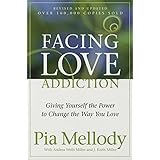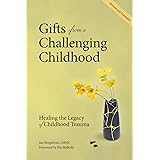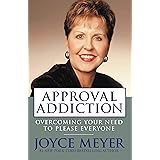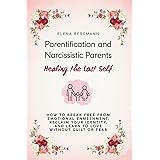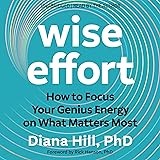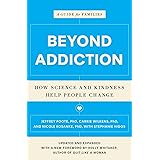As lucidly presented in the video above, the concept of "shopping addiction" serves as a crucial point of discussion for English learners navigating contemporary socio-psychological terminology. This term, which is frequently encountered in everyday discourse, often indicates a more profound behavioral pattern than mere enthusiasm for retail. While the video skillfully introduces the phrase and its primary usage, a deeper exploration of its clinical implications, psychological underpinnings, and societal context is warranted for those seeking a more expert understanding. The distinction between a casual love for shopping and a genuine compulsion is significant, with the latter often necessitating professional insight and intervention.
Deconstructing Compulsive Buying Disorder (CBD)
Compulsive Buying Disorder, more formally recognized within the psychiatric community as oniomania or simply shopping addiction, represents a behavioral addiction characterized by excessive, uncontrolled, and repetitive purchasing behavior. This pattern of consumption is typically driven by an irresistible urge, leading to significant distress or impairment in major areas of an individual’s life. Unlike typical shopping, where purchases are made based on need or reasoned desire, compulsive buying is frequently reported as being impulsive, often involving items that are unnecessary or unaffordable. The ephemeral high associated with the act of acquisition is often followed by feelings of guilt, shame, and remorse, as eloquently highlighted in the accompanying video’s basic outline of the condition.
1. Defining the Clinical Spectrum: It is important to acknowledge that shopping addiction is not formally recognized as a distinct diagnostic category in the Diagnostic and Statistical Manual of Mental Disorders (DSM-5), unlike substance use disorders or gambling disorder. Nevertheless, its clinical features often align with impulse control disorders and other behavioral addictions, indicating a shared neurobiological and psychological basis. Clinicians and researchers frequently classify it under broader categories such as “other specified impulse-control disorder” or as an aspect of obsessive-compulsive spectrum disorders, given the recurring intrusive thoughts and repetitive behaviors observed.
2. Identifying the Core Features: Key characteristics of shopping addiction typically involve an overwhelming preoccupation with shopping and buying, which subsequently leads to shopping sprees that are perceived as uncontrollable. These episodes are often initiated by negative emotional states, such as anxiety, depression, loneliness, or stress, suggesting that shopping is utilized as a maladaptive coping mechanism. The act of buying itself can temporarily alleviate these feelings, creating a reinforcing cycle that perpetuates the compulsive behavior and reinforces the shopping addiction loop.
The Psychological Underpinnings of Excessive Shopping Behavior
The genesis of compulsive buying behavior is understood to be multifaceted, involving a complex interplay of psychological vulnerabilities, neurobiological factors, and environmental influences. From a psychological perspective, individuals prone to shopping addiction frequently exhibit underlying emotional dysregulation and difficulties with impulse control. The temporary mood uplift experienced during shopping provides an immediate, albeit fleeting, sense of control and gratification, which can be particularly alluring for those struggling with chronic low self-esteem or feelings of inadequacy. This temporary escape mechanism often serves to mask deeper emotional wounds or unresolved psychological conflicts.
1. The Role of Dopamine and Reward Pathways: Neurobiologically, the act of shopping, particularly the anticipation and acquisition phases, is known to activate the brain’s reward system, leading to the release of dopamine. This neurotransmitter is associated with pleasure and motivation, and its surge can create a powerful reinforcing loop that drives repeated engagement in the behavior. For individuals with shopping addiction, this reward system may become dysregulated, leading to a diminished capacity to experience pleasure from other activities and an increased reliance on shopping for emotional regulation. The “high” obtained from shopping becomes a primary means of self-medication.
2. Coping Mechanisms and Emotional Avoidance: Often, compulsive shopping is employed as an avoidance strategy, allowing individuals to temporarily divert their attention from pressing problems, uncomfortable emotions, or difficult life circumstances. This can range from relationship issues and professional setbacks to personal insecurities and existential dread. The immersive experience of browsing, selecting, and purchasing offers a convenient, albeit unsustainable, reprieve from these internal stressors, making it a powerful, albeit destructive, coping mechanism for many affected by shopping addiction.
Societal Influences and the Modern Consumer Landscape
Beyond individual psychological factors, the contemporary consumer culture plays a significant role in exacerbating predispositions to shopping addiction. Societal pressures, aggressive marketing strategies, and the pervasive accessibility of retail platforms contribute to an environment where excessive consumption is not only normalized but often idealized. The constant bombardment of advertisements, particularly through digital channels, expertly targets consumer vulnerabilities, creating artificial needs and fostering a culture of instant gratification. This external environment can significantly lower the barrier to engaging in compulsive buying.
1. The Impact of Digital Retailing: The advent of e-commerce has dramatically transformed shopping habits, making purchasing incredibly convenient and accessible 24/7. Online platforms, mobile shopping apps, and social media commerce remove many traditional barriers to spending, such as physical exertion or social inhibition. The ease of one-click purchasing, coupled with personalized recommendations and targeted advertising, can accelerate the cycle of shopping addiction, making it easier for individuals to engage in discrete, often unmonitored, buying sprees. The immediate gratification afforded by digital transactions further reinforces the addictive pattern.
2. Marketing and the Glorification of Consumption: Modern marketing frequently links purchasing specific products with attributes like happiness, success, social status, or self-worth. This cultural narrative can be particularly damaging for individuals who are already susceptible to feelings of inadequacy or who derive a sense of identity from their possessions. The implicit message that consumption equates to well-being can intensify the pressure to shop, blurring the lines between genuine need and manufactured desire, ultimately feeding into the pervasive problem of shopping addiction.
Distinguishing a Passion for Shopping from Compulsion
The video astutely points out the critical difference between loving to shop and being addicted to it, a distinction that is frequently misunderstood by the general public. A genuine enthusiast for shopping can control their spending, adheres to a budget, and derives pleasure from the process without experiencing significant negative repercussions. Their shopping habits do not interfere with their personal relationships, financial stability, or professional responsibilities. The activity is engaged in for leisure, necessity, or enjoyment, and it is readily stopped or scaled back when other priorities arise.
1. Red Flags for Compulsive Behavior: Conversely, an individual struggling with shopping addiction experiences a profound loss of control over their purchasing activities, often spending beyond their means and hiding their shopping behaviors from loved ones. The financial strain can be severe, leading to escalating debt, impaired credit, and even bankruptcy. Emotionally, the shopper is frequently plagued by intense guilt, regret, and anxiety post-purchase, symptoms that are absent in recreational shoppers. These negative consequences accumulate and significantly impact their quality of life, underscoring the serious nature of the shopping addiction.
2. Impact on Life Domains: The negative ramifications of compulsive buying extend far beyond financial distress. Interpersonal relationships are often strained due to deception and conflicts over money. Professional performance can decline as preoccupation with shopping or its consequences detracts from work responsibilities. Furthermore, the emotional toll can be substantial, contributing to heightened levels of stress, depression, and anxiety. Recognizing these widespread impacts is paramount for accurately identifying and addressing true shopping addiction, as opposed to a harmless hobby.



